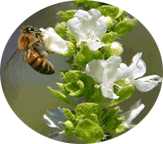Athlete’s Foot Causes & Treatments
© Copyright Bee Wilder April 6, 2015
What is Athlete’s Foot?
Athlete’s foot is a fungal infection of the skin of the feet. Athlete’s foot causes scaling and sogginess of the skin, mostly of the web spaces between the toes.
Athlete’s Foot Symptoms & Signs
- Red and/or pale skin.
- Mild to intense itchiness, mostly in between the toes.
- Burning and inflammation.
- Cracked or blistered skin.
- Skin patches and scaling of the skin.
- Skin fissures (small cracks), mainly in the heels and soles of the feet.
- Toenails may become affected as athlete’s foot progresses causing thick yellowish nails that are malformed, thickened and crumbly.
Causes of Athlete’s Foot
Athlete’s foot is a fungal infections caused by the feet being sweaty or wet for long periods of time.
Ordinarily healthy skin secretes oils and acid on its surface. This oil layer is necessary for the health and integrity of the skin, which also acts as a protective barrier. However through constant showers and bathing, soaps that remove the oils and acid layer, toxins, poor blood circulation, low oxygen levels in the blood, etc. the health of the skin is compromised leaving it more vulnerable to fungal overgrowth.
Athlete’s Foot Treatments
- Wear 100% cotton socks, changing them often. Do not wear synthetic materials of any kind, including pantyhose, knee-highs, or socks.
- Walk in bare feet as often as possible, particularly inside your own home. This allows your feet to keep dry and breath.
- Footwear should only be worn if necessary, and it should be made of natural materials, such as leather or cloth, which allow your feet to breath, and does not allow as much moisture to accumulate. Changing to different shoes everyday also helps. Shoes should be dried well before wearing them again. A hair dryer can be used to speed up the process.
- Dust closed-in shoes with a light layer of baking soda to absorb any excess moisture before putting them on. Baking soda can be put into a large glass jar with holes in the top so you can dust it into your shoes.
- Do not let your feet stay wet or sweaty for long periods of time.
- After showering, bathing or washing your feet dry them well.
- Do not tamper with your feet too much. By that I mean, do not use a nail file, rasp, loofah or pumice stone to remove dead skin, calluses or corns. This damages the skin and encourages more fungal growth.
Instead, after taking an epsom salt bath, when your feet are clean and soft, use a natural bristle brush and a dry wash cloth and rub your feet well, rolling off any dead skin that is ready to be removed. - Rub unrefined coconut oil into your feet after bathing or showering to replenish natural oils.
